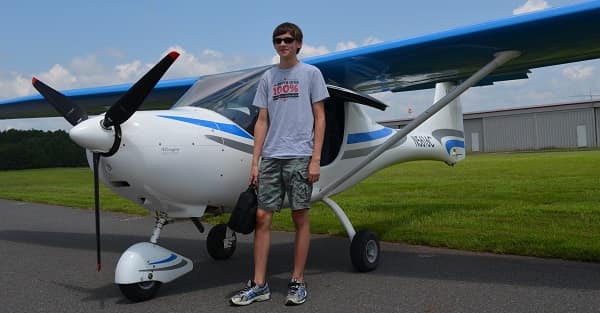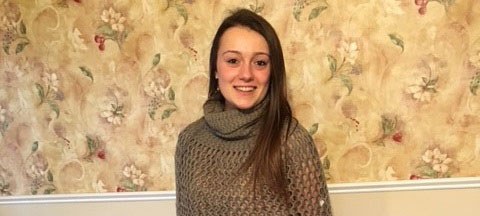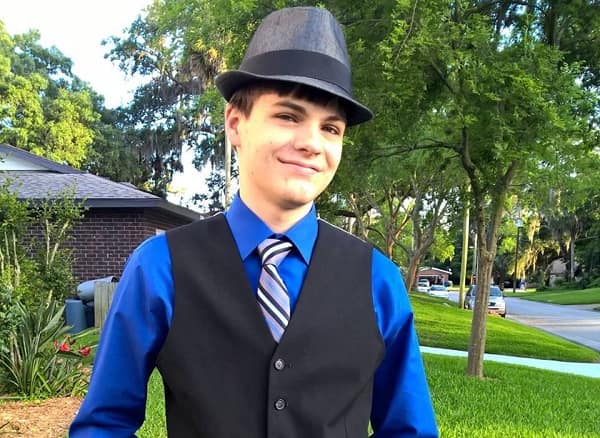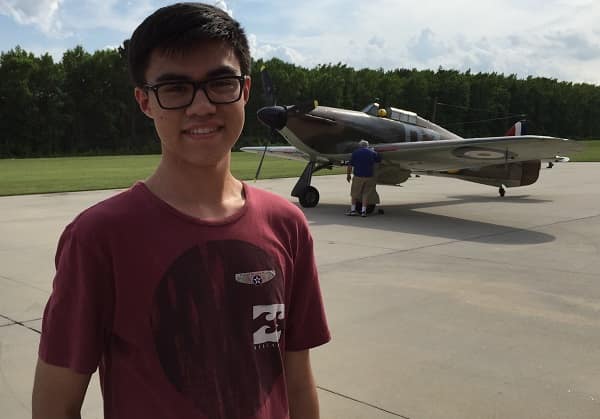E-Week Winners Use Creativity and Innovation

To encourage a future generation of engineers during Engineers Week Feb. 21 -27, Embry-Riddle Aeronautical University awarded five scholarships to prospective students who showed innovation and creativity in an engineering contest. By using household items, contestants constructed devices, structures and robotics that were displayed through social media. Each winner received a $1,000 scholarship to apply to any Embry-Riddle campus.
“I was excited to see the unique and interesting Engineers Week contest entries. There was a wide range of projects at varies levels of complexity,” said Narcrisha Norman, Assistant Professor of Engineering Sciences at Embry-Riddle who served as a contest judge. “It is nice to know that the contestants have chosen to become a part of our family here at Embry-Riddle Aeronautical University.”
The winners and their projects are described below.
Michael Wirsing, 18, North Carolina
Michael Wirsing wanted a 3D printer of his own, but instead of buying one, he wanted the challenge of making one himself. For the contest Wirsing designed two 3D printers. He built one out of hot glue, a sheet of a glass from an old display cabinet, bits of wood and zip ties. The second printer was made out of LEGOs. Wirsing said he modeled the design of the printer from the one used by his high school’s robotics team. His future goals include obtaining his commercial pilot’s license and pursuing a career in computer science.
“This is the first scholarship I have won, so it means a lot to me,” Wirsing said. “I host engineering challenges with my friends, which get very competitive, so I was expecting some big competition. Seeing the email with me as the winner was awesome.”

Deanna DeMattio, 17, Connecticut
As a student at a vocational agricultural school, Deanna DeMattio, has an interest in greenhouses and plants. Her goal was to design a practical and useful aquaponics system that she could use at home. By using fish as fertilizer, DeMattio constructed several tanks to filter water and feed the nutrients to plants. She said she chose this project because it’s a sustainable way to farm year round.
DeMattio has been accepted into Embry-Riddle’s Bachelor of Aeronautical Science program for the fall of 2016 and said she hopes to become a pilot and continue her learning in plant sciences so she can promote sustainable living.
“I’m excited to win this scholarship directly from Embry-Riddle because it shows the program that I am serious and dedicated to my involvement in the school,” DeMattio said. “I also hope to be involved with the Ignite research program that uses the aquaponics system at Embry-Riddle.”

Nathan Graves, 17, Florida
An interest in electromagnetics led Nathan Graves to create a 2500 gauss electric cannon capable of firing 20 rounds per minute. The small cardboard cannon fires each shot three to four feet in the air. Graves said he had been working on a prototype for a while and the contest gave him an incentive to finish a final model. Graves said he is interested in pursuing a degree in engineering physics and is considering attending Embry-Riddle after he graduates high school.
“I was hoping to win, but wasn’t necessarily expecting it. So when I found out, I was really excited,” Graves said. “It gave me feedback that I’m probably heading in the right direction career-wise.”
Shaun Sam Matthews, Georgia
After visiting several hospitals during a school research trip, Matthews became interested in feeding immobile or unconscious patients with an electronic feeding tube. The Ryles Tube is inserted through a patient’s nostrils and goes into the stomach. Food is typically pumped manually by a bystander. Matthews’ prototype uses electronic devices to control pressure and speed to lower the risk of choking or pneumonia.
Matthews said he is interested in pursuing a career in aviation.
“It feels great to win this competition, especially because it was an open contest and there were a lot of great ideas,” Matthews said.

Jonathan Grow, Virginia, 17
As an active member of Northern Virginia Radio Control, a model aircraft club, Grow found himself in need of a new hobby when the Federal Aviation Administration enacted a No Drone Zone within a 30-mile radius of Washington, D.C. last year. Grow decided to build a small airboat that could glide over ice and snow in addition to floating on water. He constructed the boat with insulation foam and electronics leftover from a crashed flying wing.
Grow said he plans to pursue a degree in aerospace engineering and his career goals include working on launch vehicles for space.
“Waiting for the restrictions to be lifted, I didn’t fly anything for three months. It was torture and I had to build something,” Grow said. “I determined that building a surface vehicle was going to be the only way to bypass the restricted flight zone. It feels great to be one of the winners of the E-Week contest. I’m glad that my airboat was able to impress the judges.”
Learn more about Engineering at Embry-Riddle Aeronautical University.
